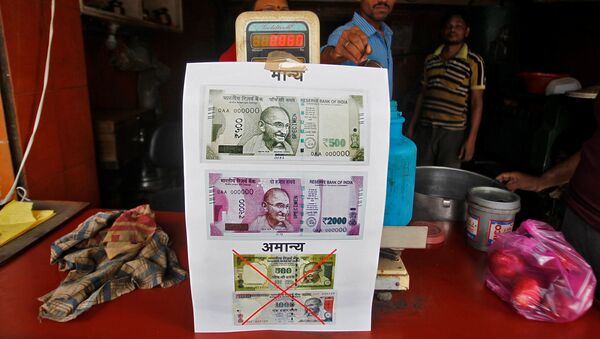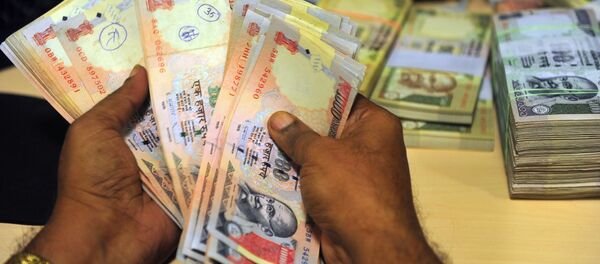New Delhi (Sputnik) — India’s move to fight tax evasion and terror funding has created major chaos across its cities and towns. Customers without cash in hands for day to day affairs have waited in bank quest for hours; many of them are without a penny while some have been left holding new Rs 2000 (USD 30) currency notes that find no takers. At the same time, Indians have flooded the social media with the new currency note.
Mile-long queues formed outside banks well before the opening hours. People carrying old currency notes in huge quantities jostled with each other and the police was summoned at several places to manage the crowds. The excitement outpoured on social media with people posting selfies with the new Rs. 2,000 currency note.
Finally got the 2K note!! pic.twitter.com/3GEnidJOZu
— सौरभ शुक्ल (@DigitalLekhanee) November 10, 2016
#Selfiewith2000 pic.twitter.com/Bmpww2aRaM
— Abhishek Gupta (@abhinyn007) November 10, 2016
#SelfieWith2000 😂😂 Welcome New Gandhi ji. pic.twitter.com/ka0MQA4Rc5
— Vishu (@SrkVishu1) November 10, 2016
Meanwhile, there were reports of widespread black marketing of lower value notes that were unaffected by demonitisation. Travelers at railway stations were seen exchanging Rs. 500 notes with only three Rs 100 notes. The e-commerce industry has also restricted cash-on-delivery payment of up to Rs. 999. However, big retailers were doing good business as more people were using their credit and debit cards. Reports suggested a spike in the business of digital payment industry as people rushed to sign up for mobile wallets like Paytm, MobiKwik and Freecharge.
“The overall consumption pattern of an average Indian is likely to take a toss until the gap between old currency notes and new ones is filled. This may take time,” said an official of the Finance Ministry.
The Indian Government’s demonetization of currency notes aims to check circulation of counterfeit notes and squeeze out unaccounted black money
Citizens have time till December 31 to deposit the banned currency notes in their bank accounts. Cash withdrawal has been restricted to Rs. 10,000 (USD 150) per day until liquidity is restored. Real estate will suffer most as the sector accounts for 30 per cent of the country’s black money, according to an estimate. This is may affect the construction material industry, mainly steel and cement.



